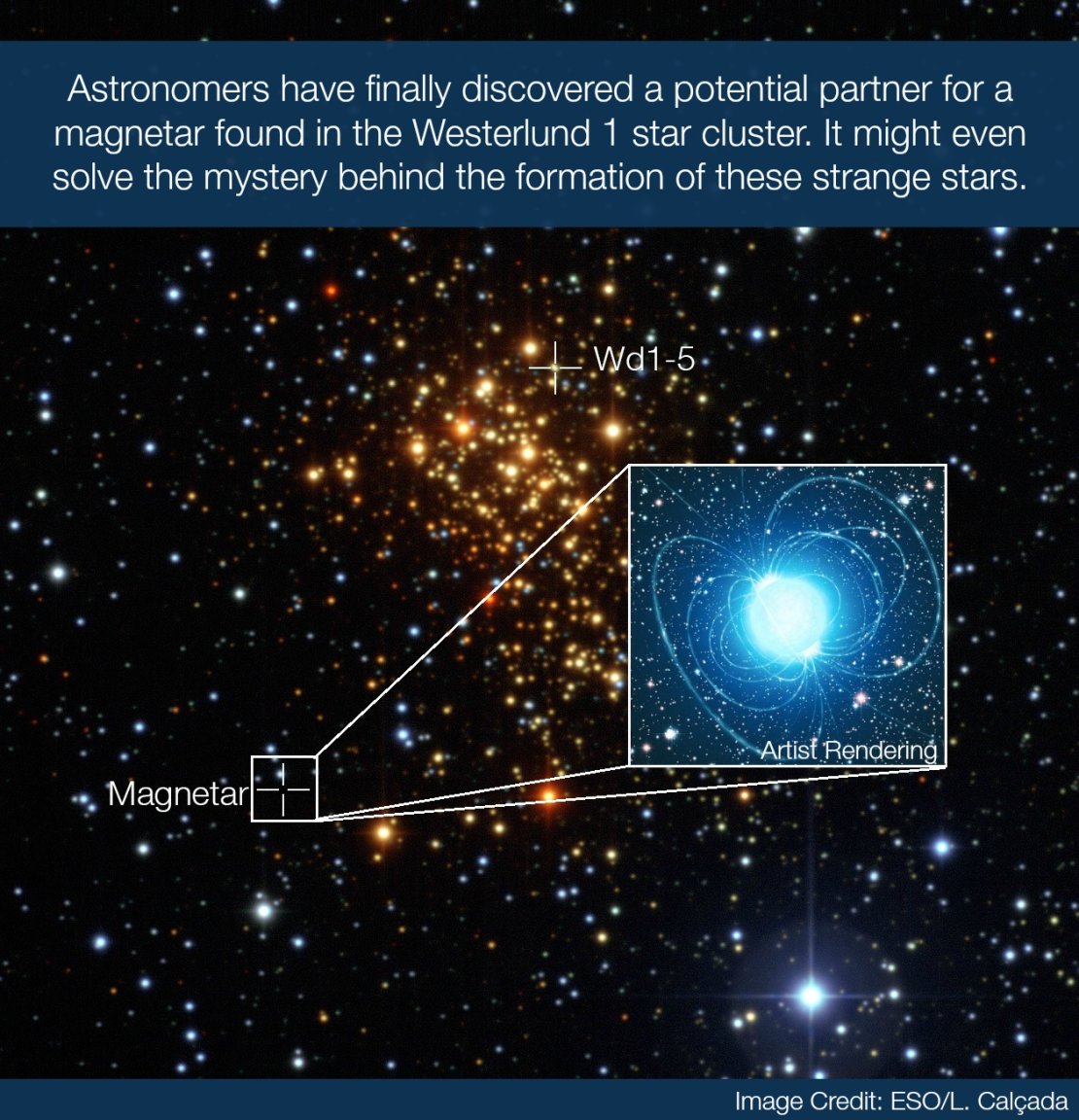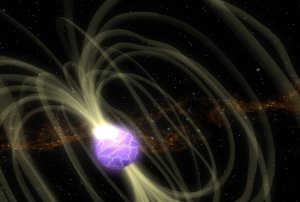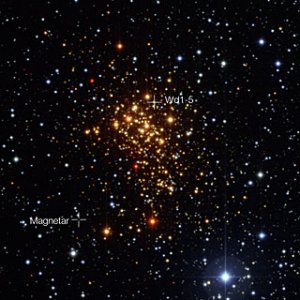

Black holes are exotic, impossibly-strange objects that harbor many secrets we are still trying to make sense of. Among all of those secrets, one of the most perplexing is that of magnetars: objects that are one part neutron star, one part super-magnet (basically, they are neutron stars on magnetic crack). Each of them are generally more than one million times more powerful than ANY magnet found on Earth. Yet, the manner in which they form is a bit of a conundrum to the scientific community; one that might finally have some resolution.
Dying Moments:
You see, we have long known that at the heart of every magnetar is a neutron star. These tiny, impossibly dense stars form following the death of a massive star. Various things factor into its demise, but the important part to note is that the star has depleted the entirety of its fuel for nuclear fusion (its life-source), which throws a wrench (a very big one) into the normal operations that keep stars chugging along over the course of billions of years. Namely, it stars fusing its collection of heavier elements into elements that are even more heavy, up to (and including) iron. This eventually prevents the star from maintaining hydrostatic equilibrium, which, in turn, results in the collapse of the star’s core, consequently leading to what might be the most spectacular display of the laws of physics: supernovae.
The now-defunct star spews what’s left of its guts into the interstellar medium at unbelievable speeds,eventually leaving behind either a black hole, a neutron star or a pulsar (they are the bastard cousins of neutron stars) – along with a glowing remnant that helps us identify the site these energetic events took place in. They also provide a host of data into the inner-workings of a star’s death. Most of the data shows that the events are largely the same each time,but not always. In fact, astronomers have found a hand-full of these crash sites that contradict previously-established notions about the formation of black holes and their alternatives. Our models say that once a star of a certain mass implodes, it should always leave a black hole behind in its wake.
But since it doesn’t, rather than throwing our models to the wayside, astronomers sought alternate ideas for how magnetars form. The most popular posits that these objects are the lovechild of two massive stars that are locked in a binary system so compact, the Earth’s orbit around the Sun could fit inside of it (try to imagine two Betelgeuse-sized stars orbiting each other from such a close distance… it’s madness incarnate). Only, we’ve never actually found a viable companion lurking near one of these objects, until now, that is.
Mystery Solved?
Today, the European Southern Observatory announced that they’ve found the smoking-gun in the magnetar formation mystery.

While looking at a star cluster known to contain one of these peculiar objects, dubbed CXOU J164710.2-455216 (for the sake of brevity, we’ll call it CXOU), they were finally able to suss out a potential companion star. The star, called Westerlund 1-5, is named after the region it calls home: the Westerlund 1 star cluster (the whole lot of it can be found about 16,000 light-years from Earth in the Ara constellation).
Prior to its rebirth as a magnetar, CXOU contained the mass of 40 suns. During the last epoch of its life, instead of cannibalizing on its neighboring partner – siphoning the outermost layers of the smaller star’s gaseous envelope – it transferred a significant chunk of its mass to its partner. Throughout the process – while the partner gradually acquired more mass – the larger star of the two started to rotate at an increasingly fast rate. This would, in turn, incite the creation of the object’s unusually strong magnetic field; a key characteristic of a magnetar.
Oddly enough, the mass transfer would have eventually flipped, with the companion spitting back some of the mass gained to its partner (the rest would seed the interstellar medium with raw stellar material). This game of cosmic flip-flop left a chemical signature on Westerlund 1-5 that can still be discerned today. Moreover, once enough of the material drained away (maybe as much as 95% of its original mass), it also gave way to the creation of CXOU – the magnetar – instead of a stellar-mass black hole.
There’s also a reason that it took so long to find Westerlund 1-5 and to link it back to CXOU. You see, right after the supernova, Westerlund 1-5 was sent barreling away from the cluster at a high velocity. This played a role in the origin of the mystery, and ultimately, in the identification of the star.
According to Ben Ritcie, a co-author of the paper: “Not only does this star have the high velocity expected if it is recoiling from a supernova explosion, but the combination of its low-mass, high-luminosity and carbon-rich composition appear impossible to replicate in a single star – a smoking gun that shows it must have originally formed with a binary companion.”
Read the full press release here. The paper can be found here.
Read more about magnetars here, or learn more about the differences of neutron stars, pulsars, quasars and magnetars. Be sure to check out our article about an object that is even more baffling; blitzars.